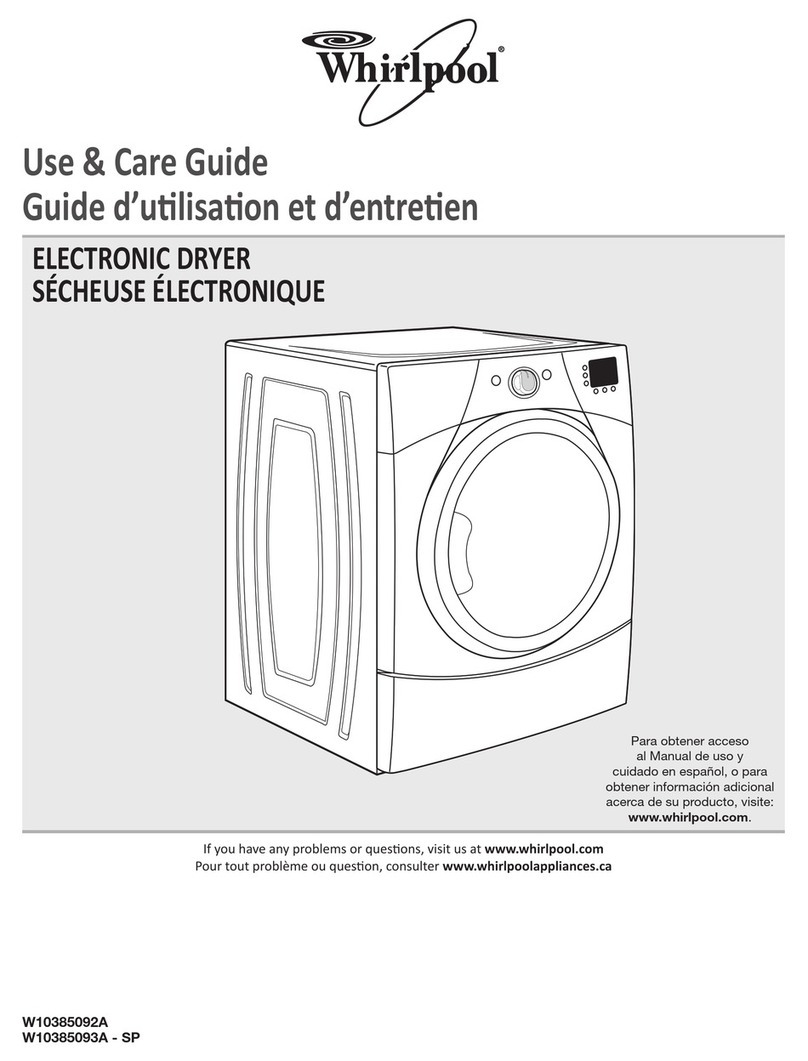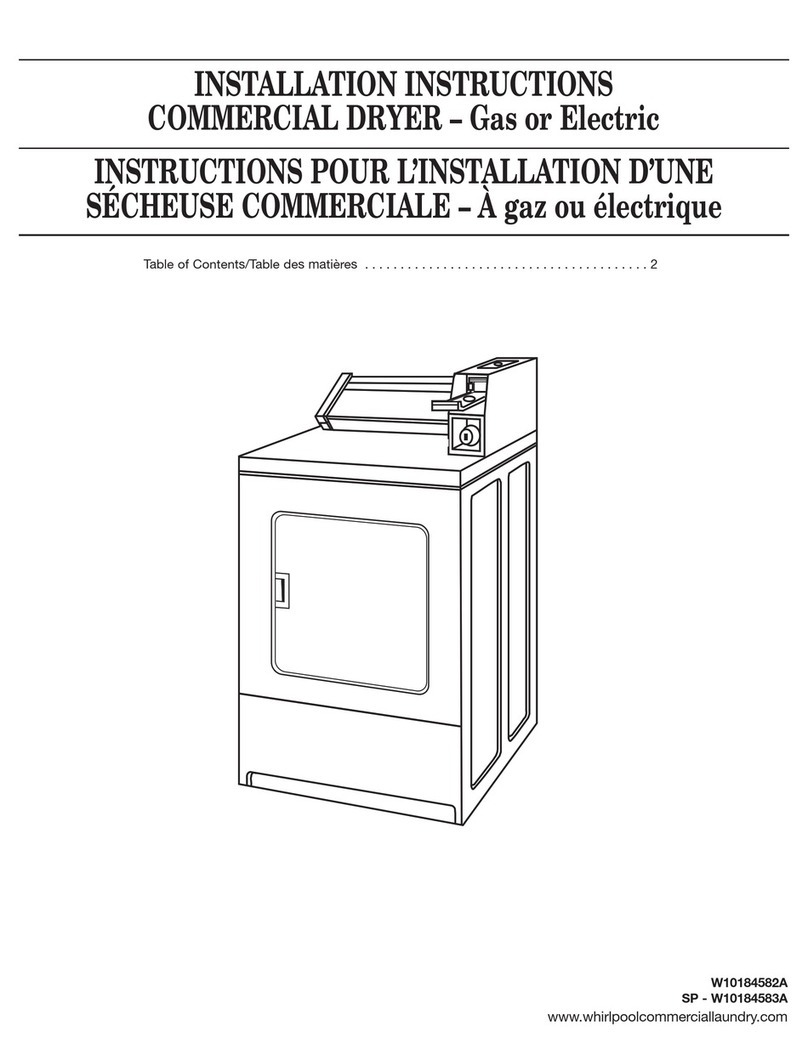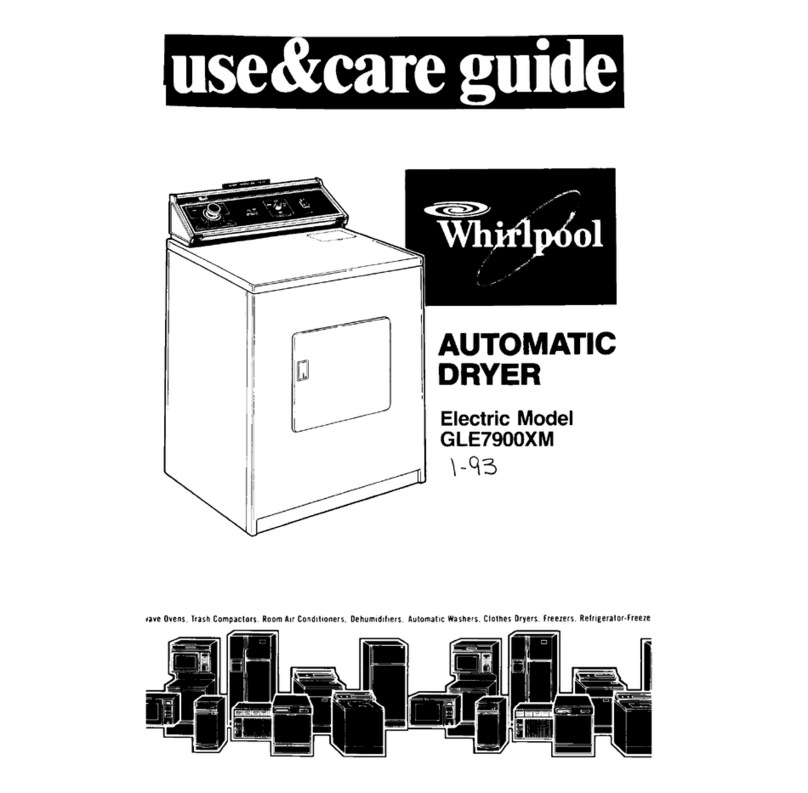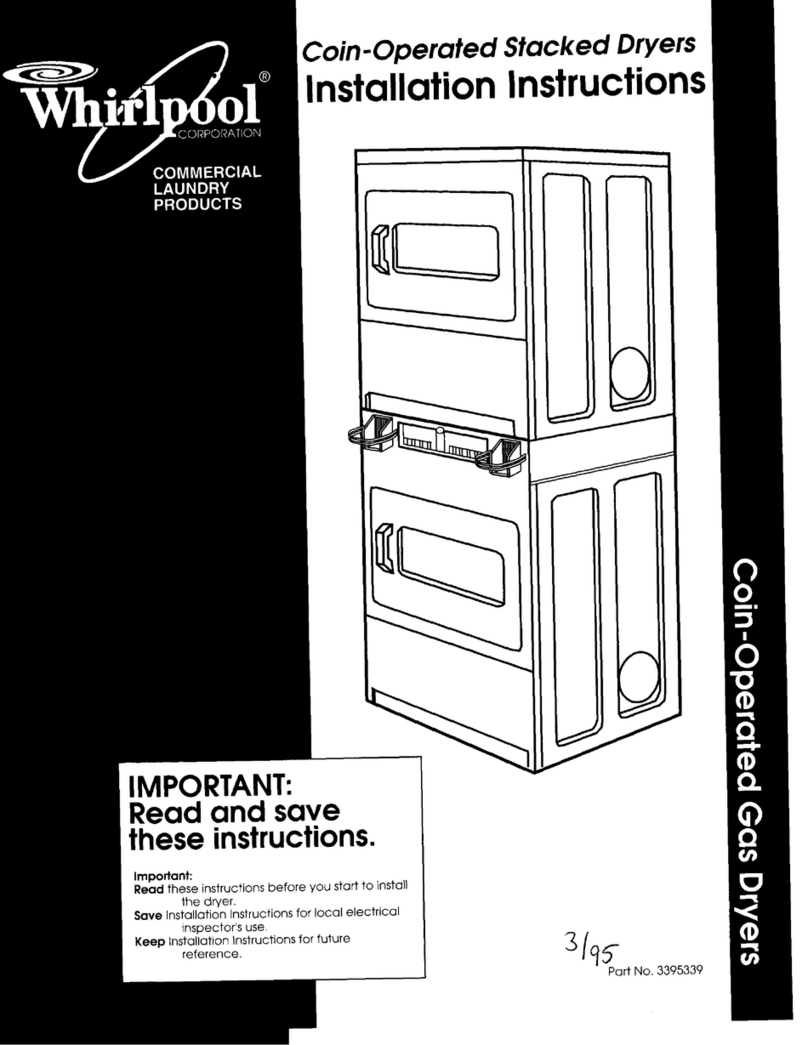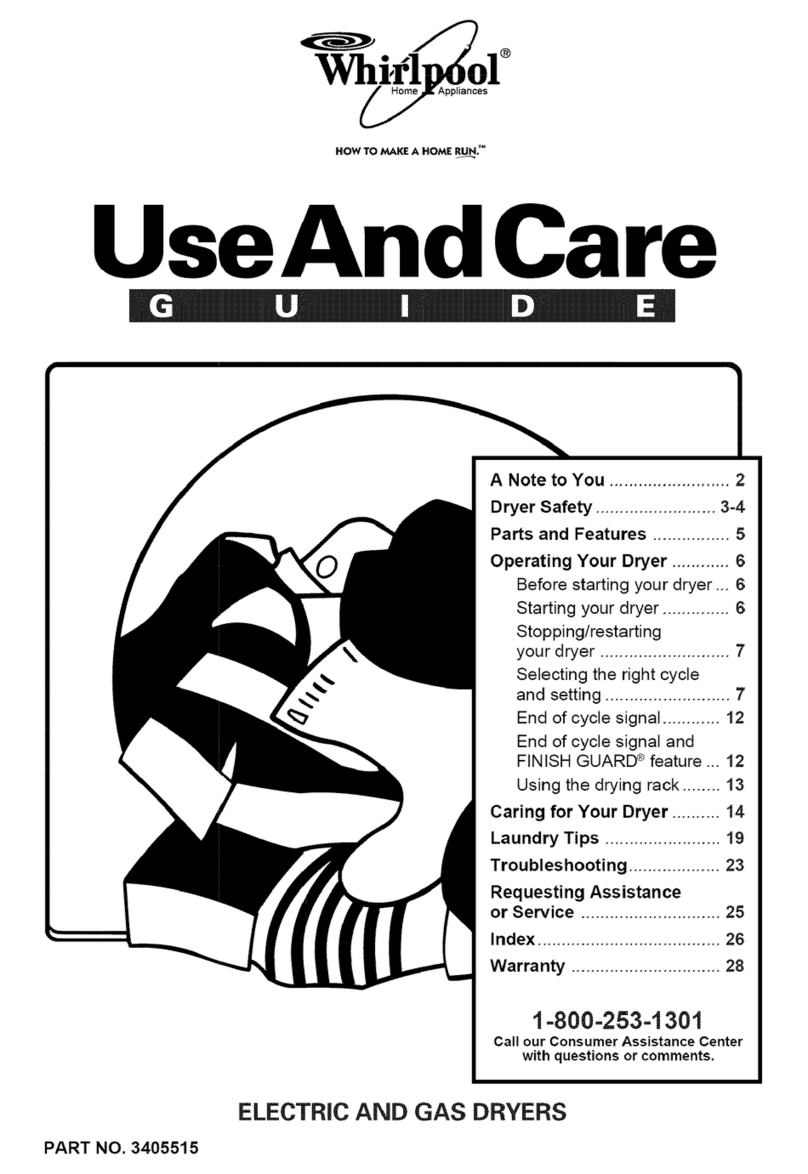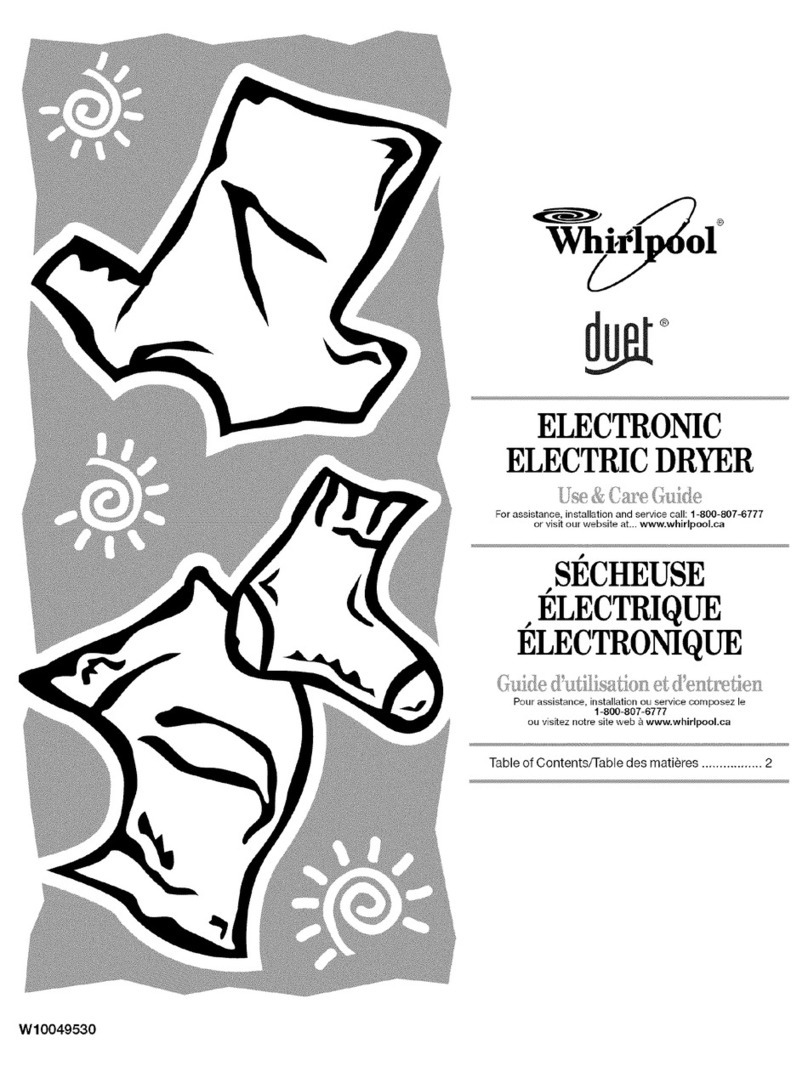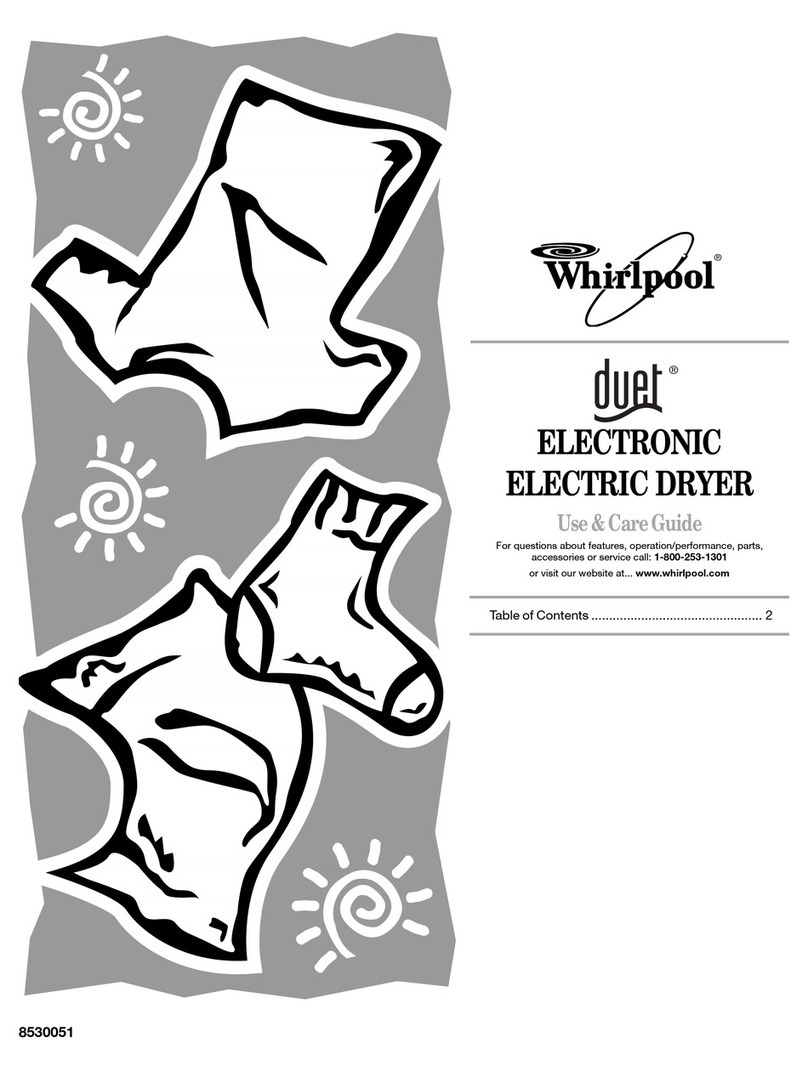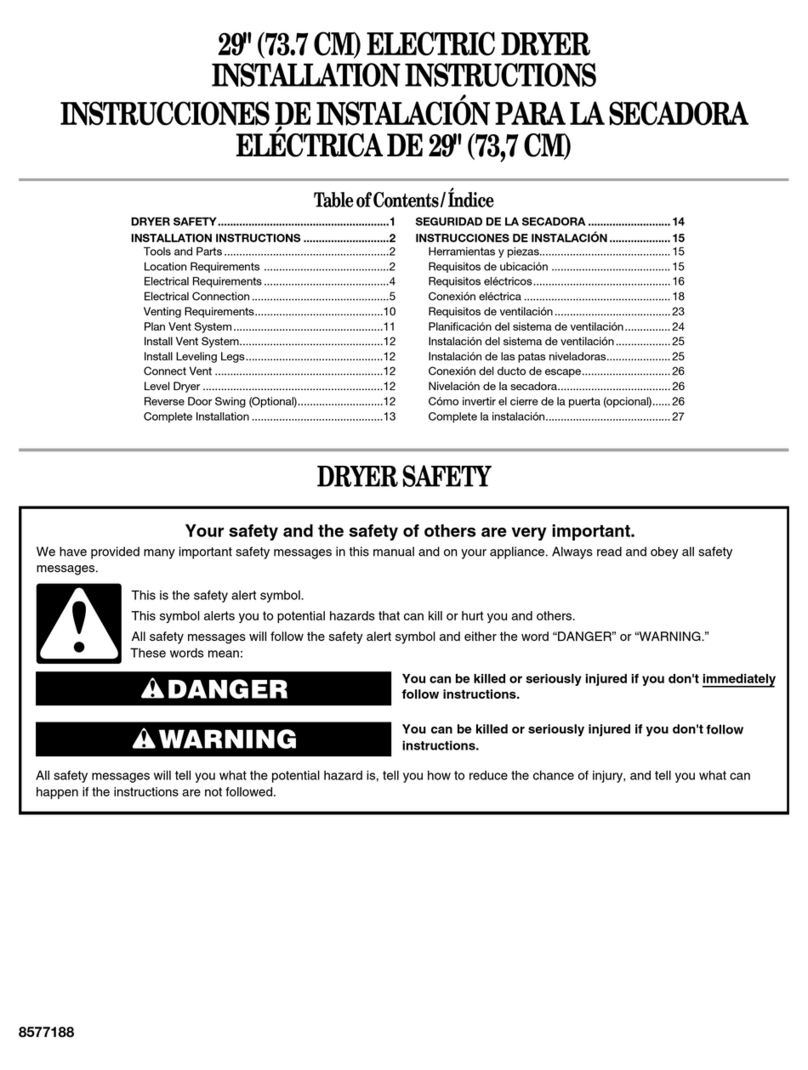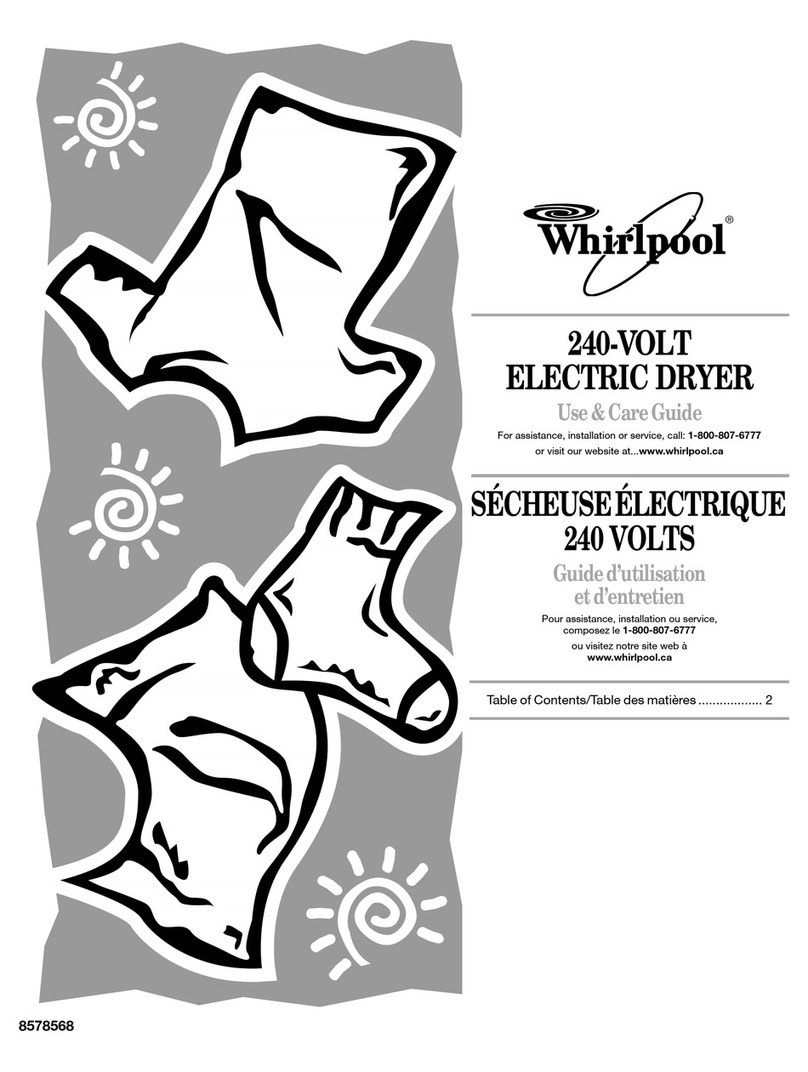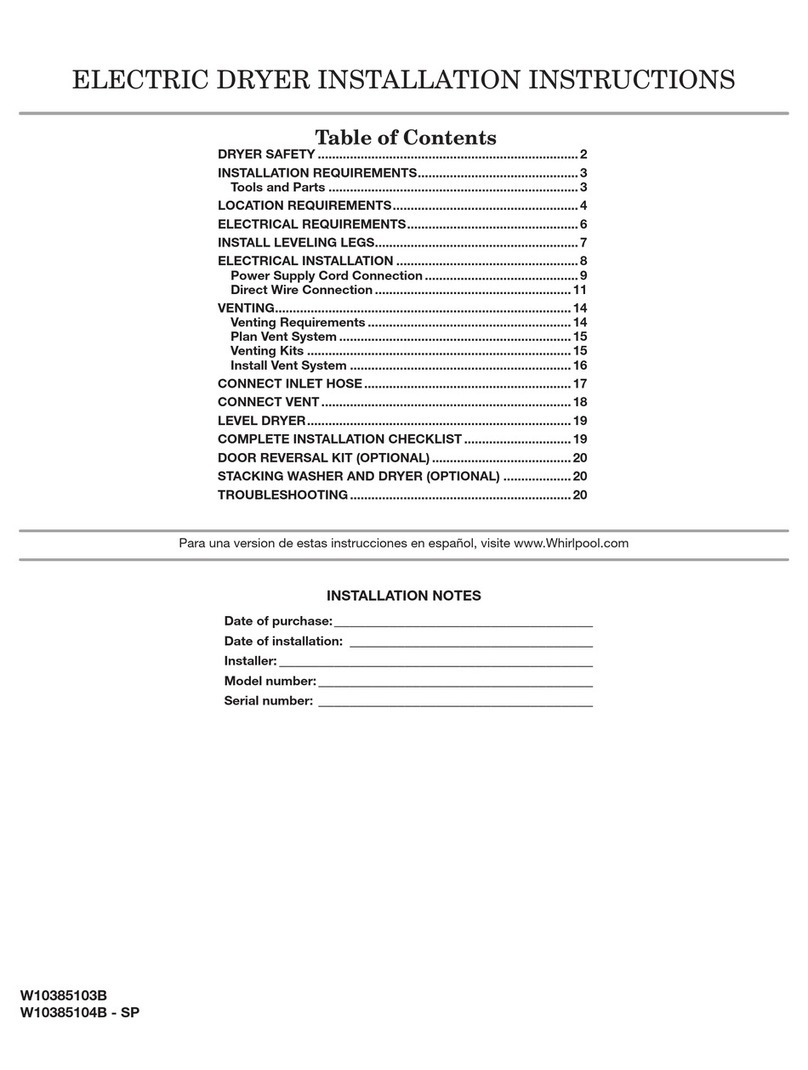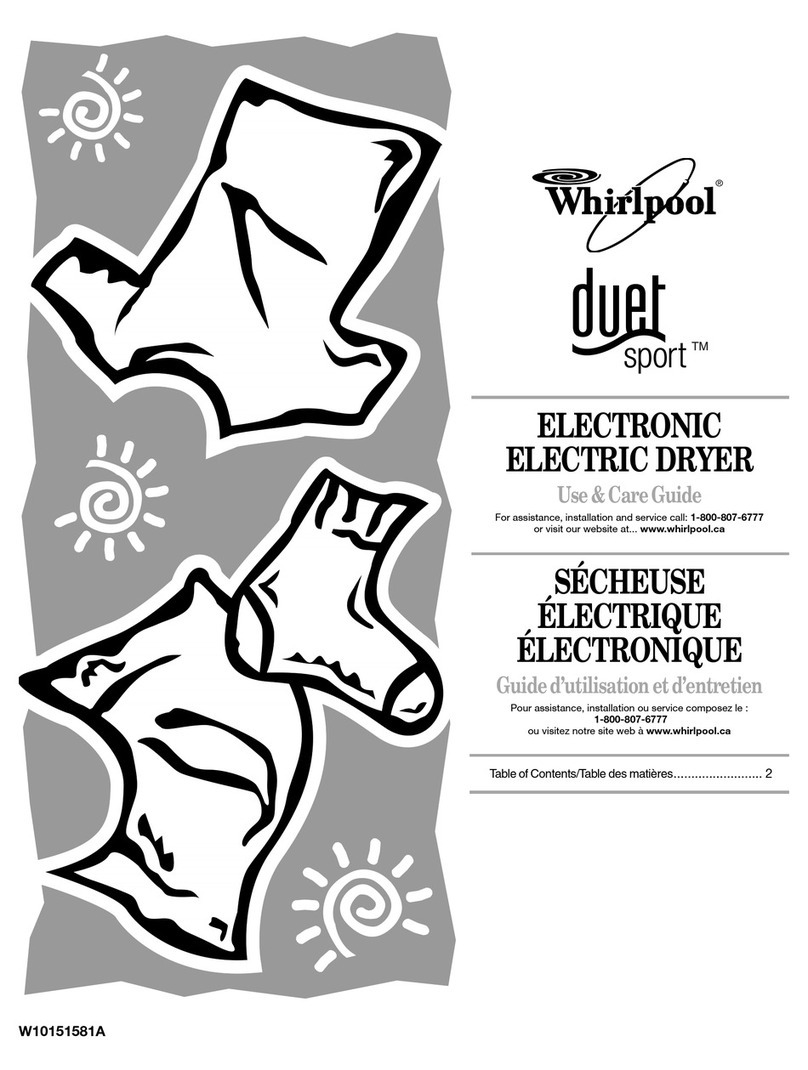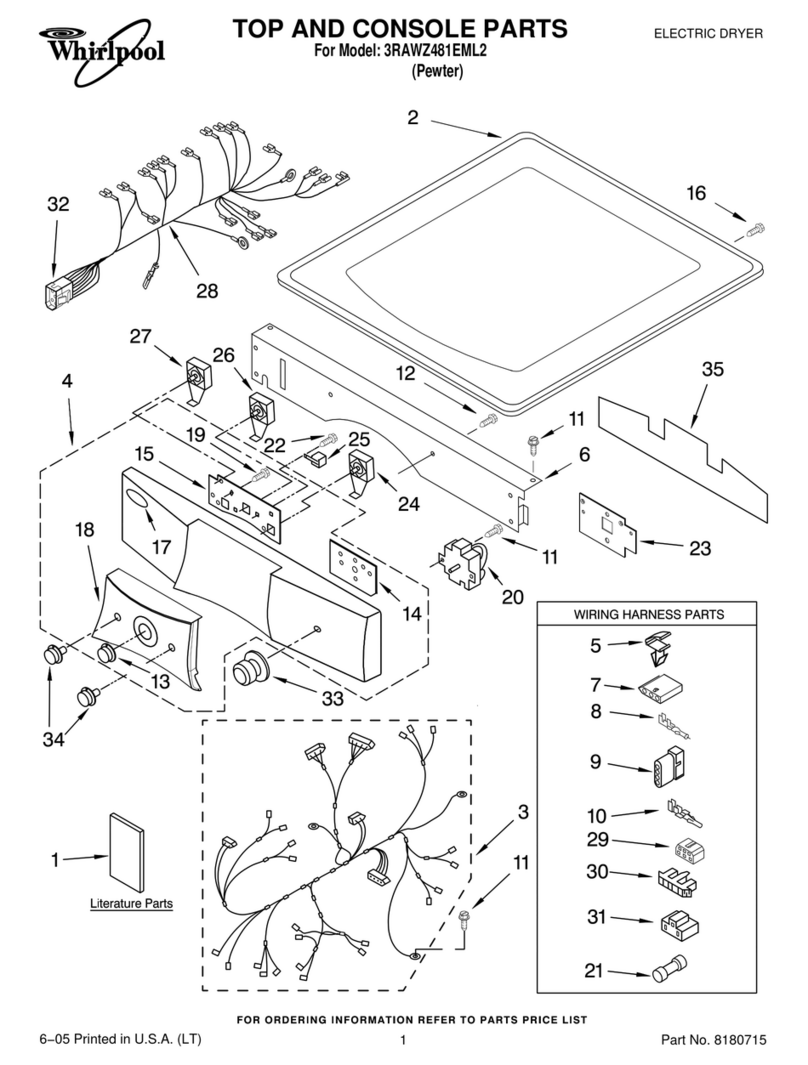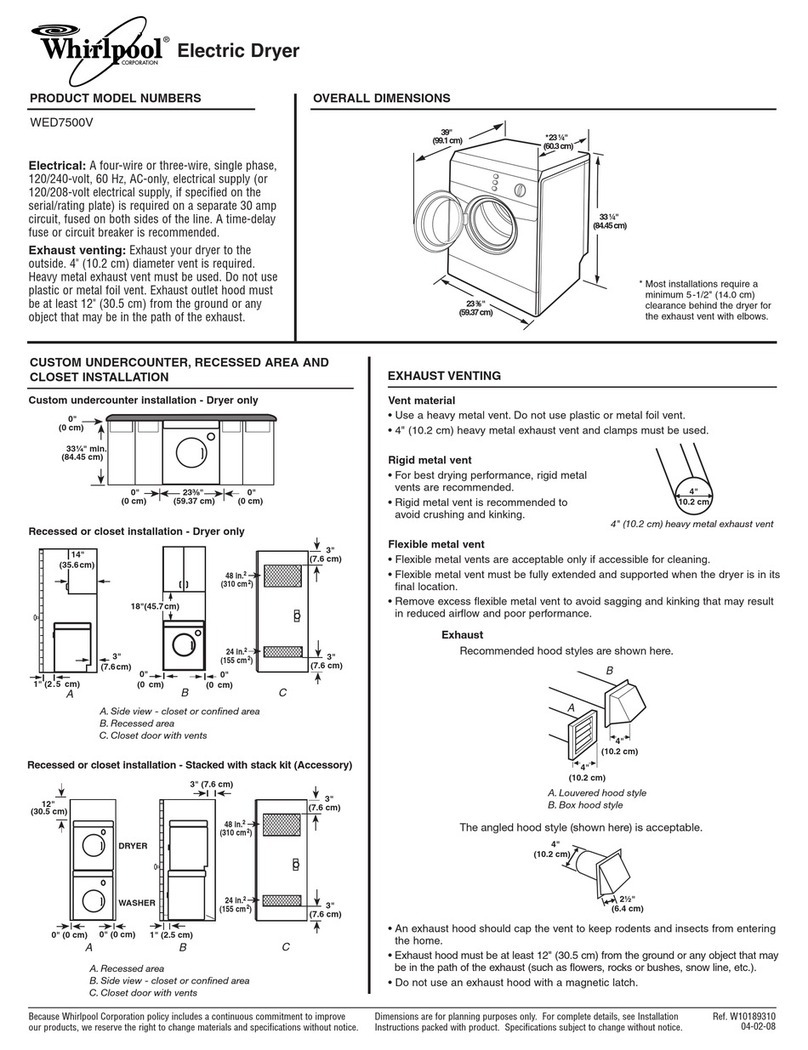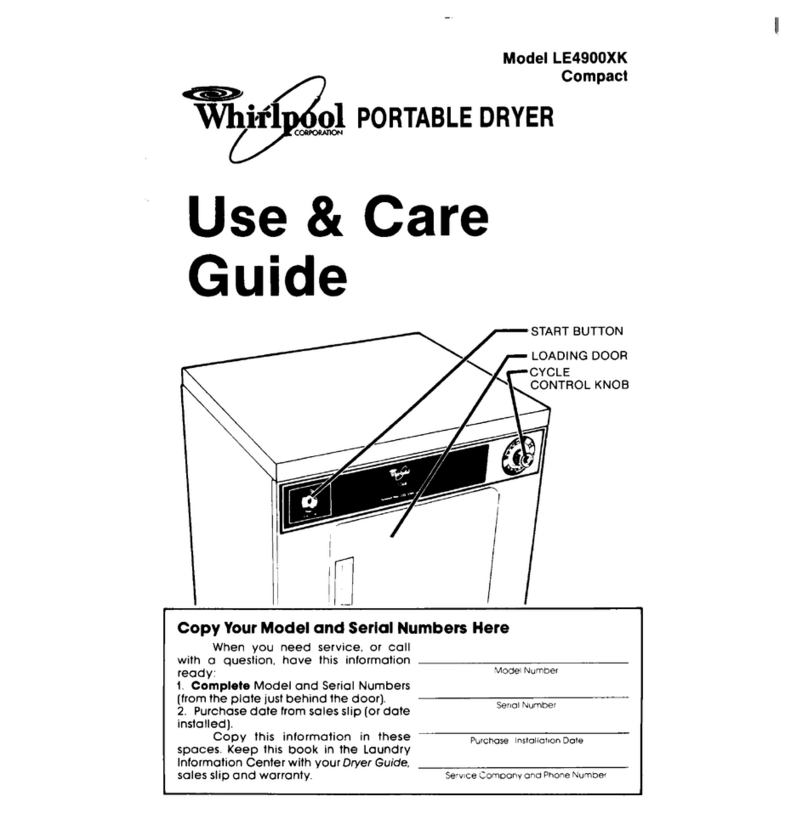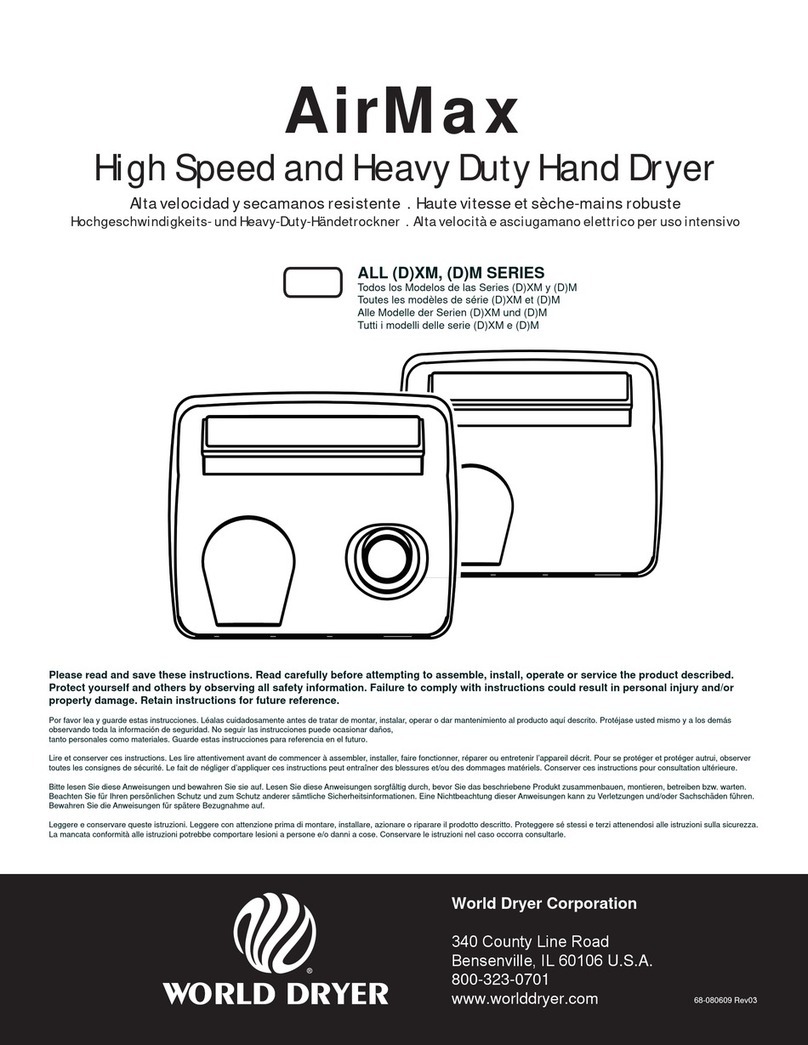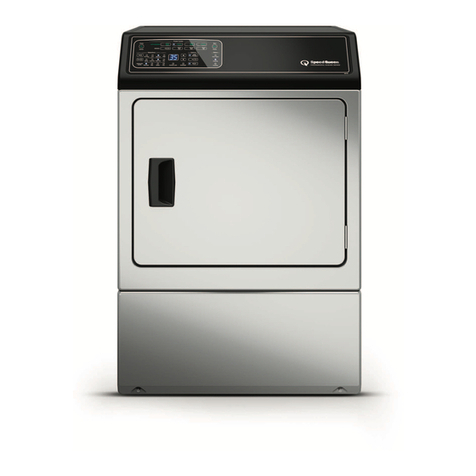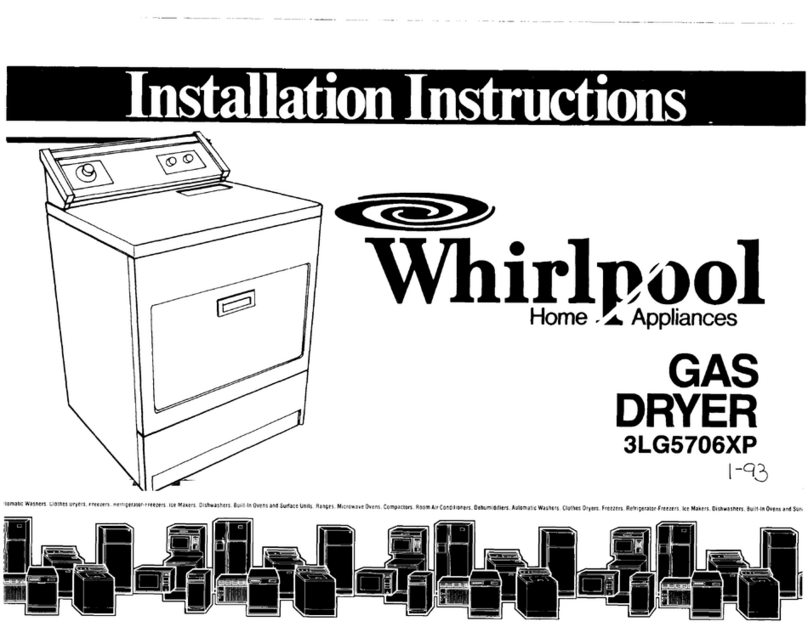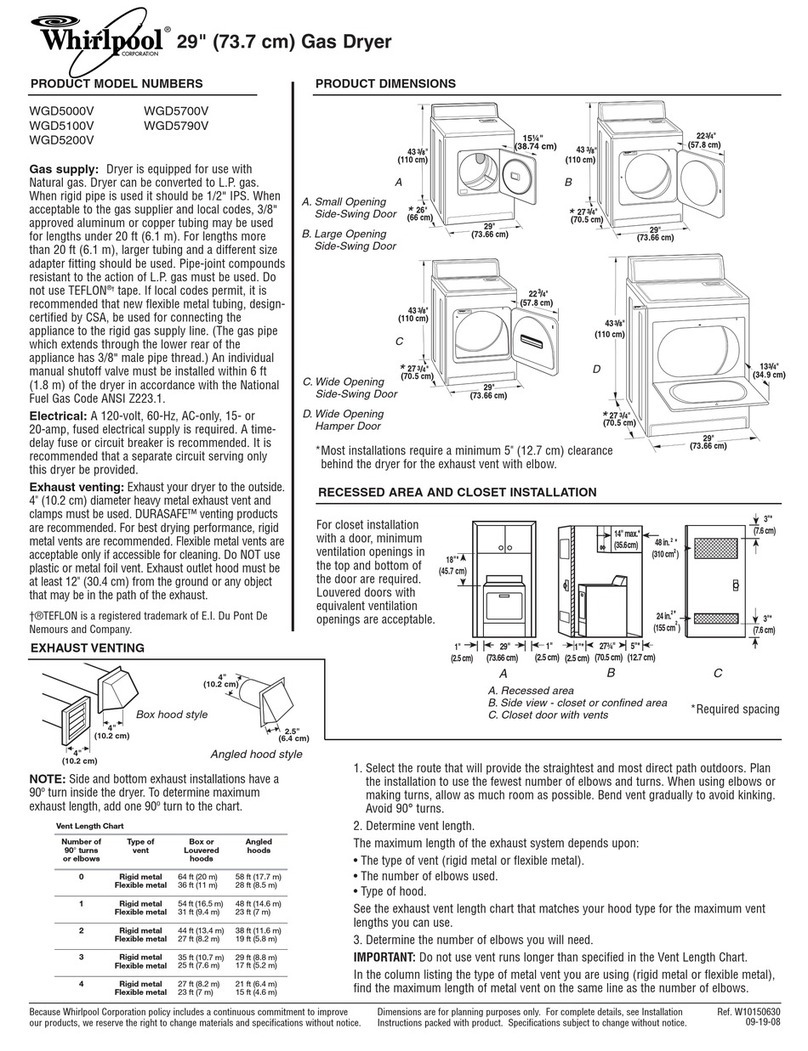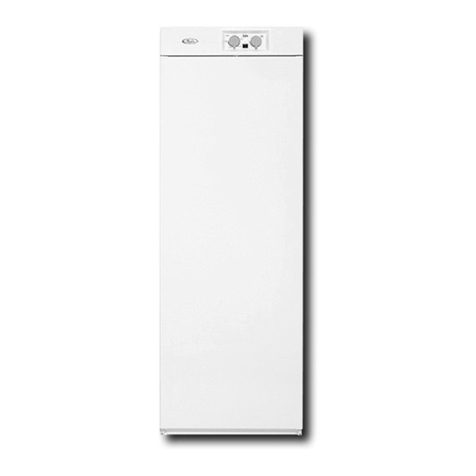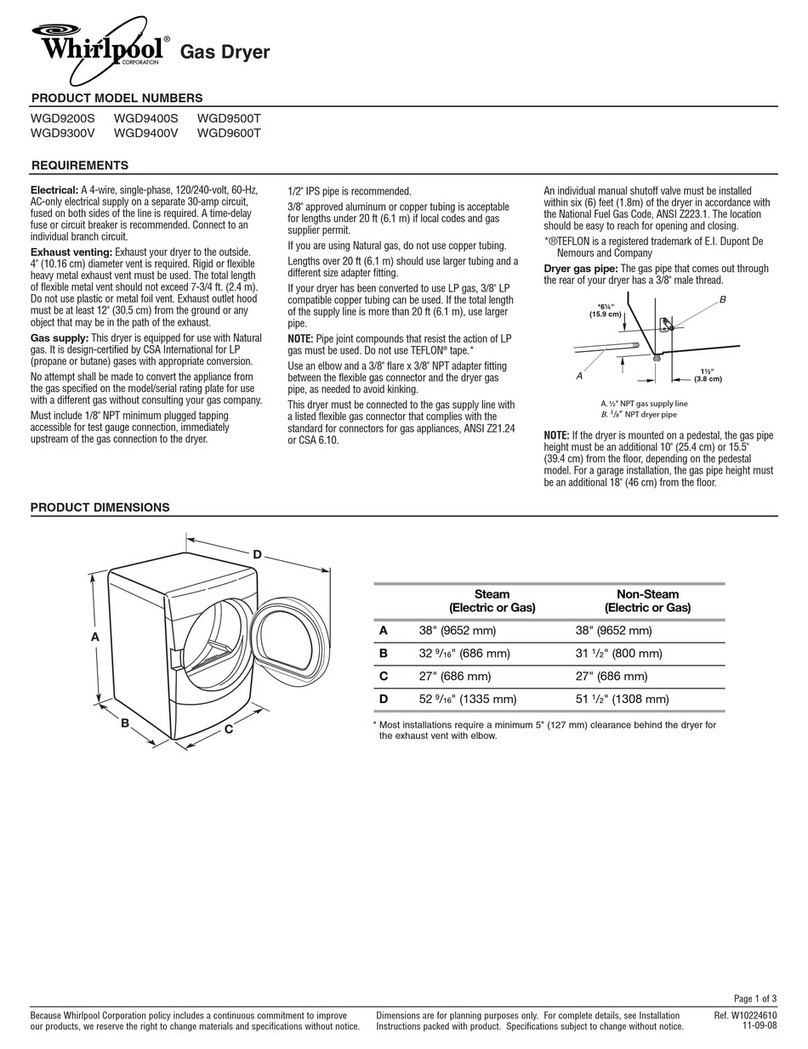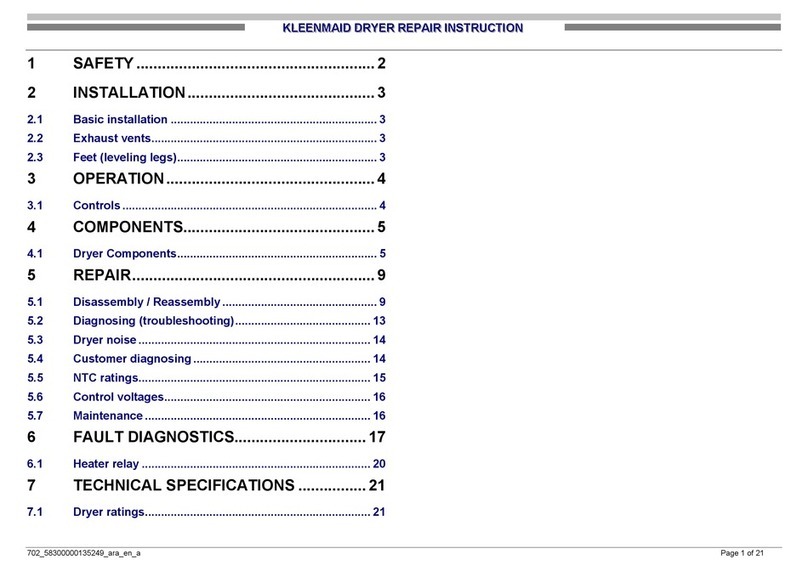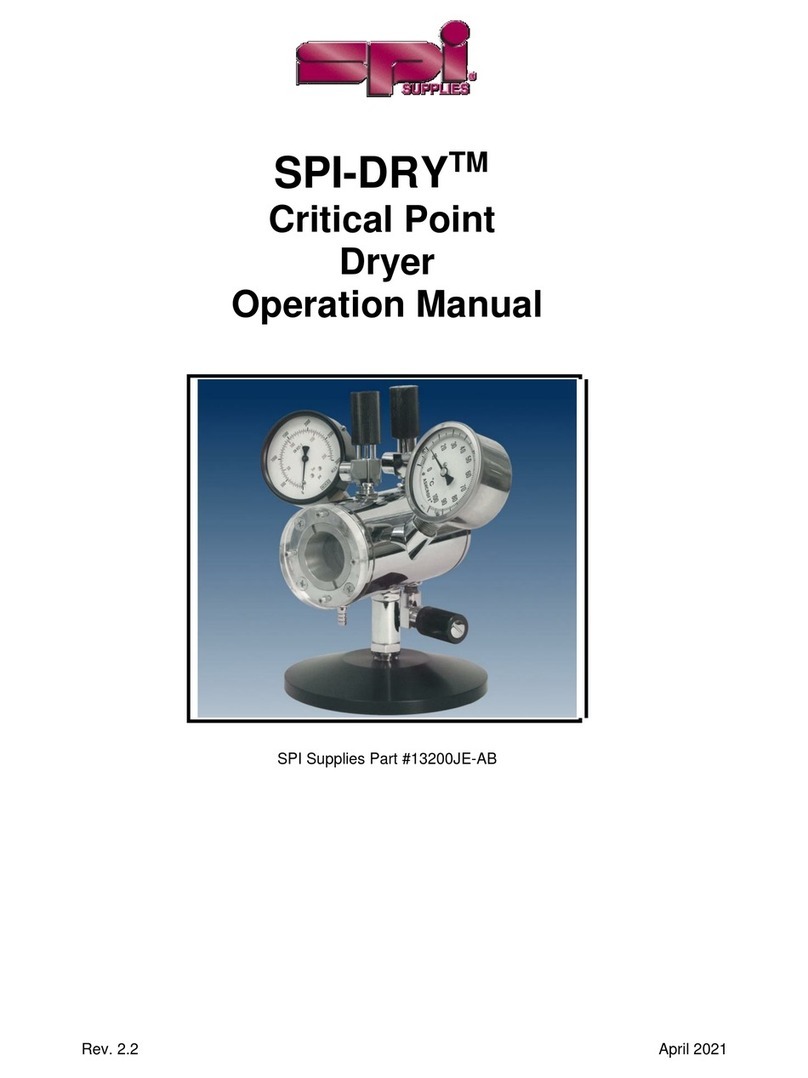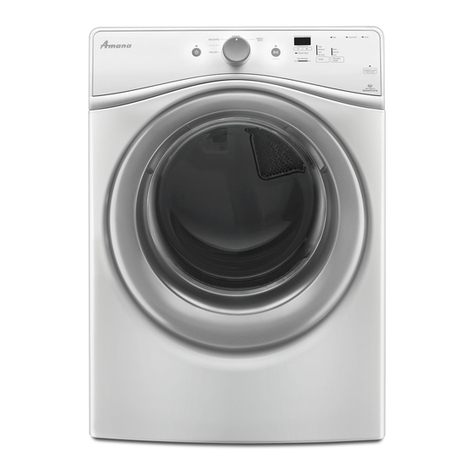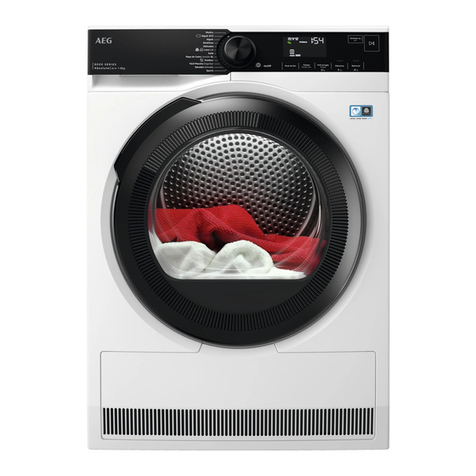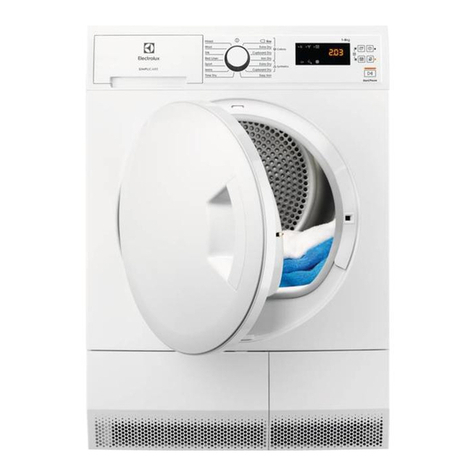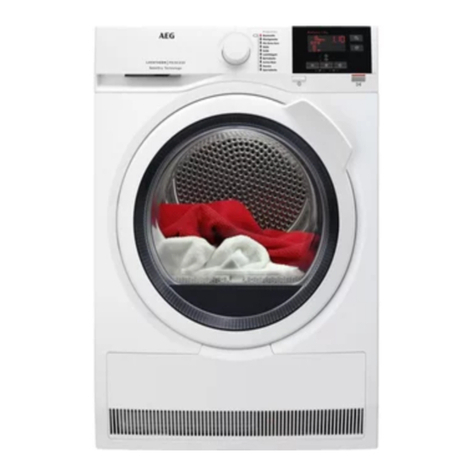
!!!!iL;i_i:i:Mi,i:t;i!di_:i_i:i!!_i:FstiM:!_fi:i_ii!tiiii_ii:tii_,,,(_i!iiiil!i}ii_7_ii_!'_
Electrical Shock Hazard
Plug into a grounded 3prong outlet.
Do not remove ground prong,
Do not use an adapter,
Do not use an extension cord.
Failure to follow these instructions can result in death,
fire, or electrical shock,
IMPORTANT: The dryer must be electrically grounded in
accordance with Iocal codes and ordinances or, in the absence of
local codes, with the National Electrical Code, ANSI/NFPA 70,
latest edition.
if codes permit and a separate ground wire is used, it is
recommended that a qualified electrical installer determine that
the ground path is adequate.
A copy of the above code standards can be obtained from:
National Fire Protection Association
One Batterymarch Park, Quincy, MA 02269
[] A 120-volt, 60-Hz, AC-only, 15- or 20-amp, fused electrical
circuit is required. A time-delay fuse or circuit breaker is also
recommended, it is recommended that a separate circuit
serving only this dryer be provided.
Recommended Ground Method
The dryer, when installed, must be electrically grounded in
accordance with Iocal codes or, in the absence of local codes,
with the National Electrical Code, ANSI/NFPA 70, latest edition,
and all local codes and ordinances.
GROUNDING INSTRUCTIONS
For a grounded, cord-connected dryer:
This dryer must be grounded, in the event of a malfunction or
breakdown, grounding will reduce the risk of eIectdc shock
by providing a path of Ieast resistance for electric current.
This dryer is equipped with a cord having an equipment-
grounding conductor and a grounding plug. The pIug must be
pIugged into an appropriate outlet that is properly installed
and grounded in accordance with aII local codes and
ordinances.
WARNING: improper connection of the equipment-
grounding conductor can result in a risk of electric shock.
Check with a qualified eIectrician or service representative or
personnel if you are in doubt as to whether the dryer is
properly grounded. Do not modify the plug provided with the
dryer: if it wiii not fit the outlet, have a proper outlet installed
by a qualified electrician.
SAVE THESE INSTRUCTIONS
6
iMPORTANT: The dryer must be electrically grounded in
accordance with local codes and ordinances or, in the absence of
local codes, with the National Electrical Code, ANSI/NFPA 70,
latest edition.
The National Electric Code requires a 4-wire supply connection
for homes built after 1996, dryer circuits involved in remodeling
after 1996, and all mobile home installations.
if codes permit and a separate ground wire is used, it is
recommended that a qualified electrical installer determine that
the ground path is adequate.
A copy of the above code standards can be obtained from:
National Fire Protection Association
One Batterymarch Park, Quincy, MA 02269
[] A four-wire or three-wire, single-phase, 120/240-volt, 60-Hz,
AC-only electrical supply (or four-wire or three-wire,
120/208-volt, if specified on the model/seria! rating plate) is
required on a separate, 30-amp circuit, fused on both sides of
the line. A time-delay fuse or circuit breaker is recommended.
Recommended Ground Method
It is your responsibility to contact a qualified electrical installer to
ensure that the electrical installation is adequate and in
conformance with the National Electrical Code, ANSI/NFPA 70,
latest edition, and all local codes and ordinances.
GROUNDING INSTRUCTIONS
For a grounded, cord-connected dryer:
This dryer must be grounded, in the event of a malfunction or
breakdown, grounding will reduce the risk of electric shock
by providing a path of Ieast resistance for electric current.
This dryer uses a cord having an equipment-grounding
conductor and a grounding pIug. The plug must be pIugged
into an appropriate outlet that is properly installed and
grounded in accordance with all local codes and ordinances.
_' For a permanently connected dryer:
This dryer must be connected to a grounded metal,
permanent wiring system, or an equipment-grounding
conductor must be ran with the circuit conductors and
connected to the equipment-grounding terminal or lead on
the dryer.
WARNING: improper connection of the equipment-
grounding conductor can result in a risk of eIectric shock.
Check with a qualified eIectrician or service representative or
personnel if you are in doubt as to whether the dryer is
propedy grounded. Do not modify the plug on the power
suppIy cord: if it wiII not fit the outlet, have a proper outlet
installed by a quaIified electrician.
SAVE THESE INSTRUCTIONS
